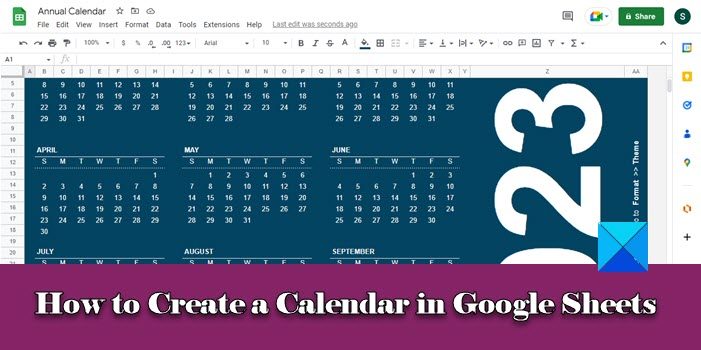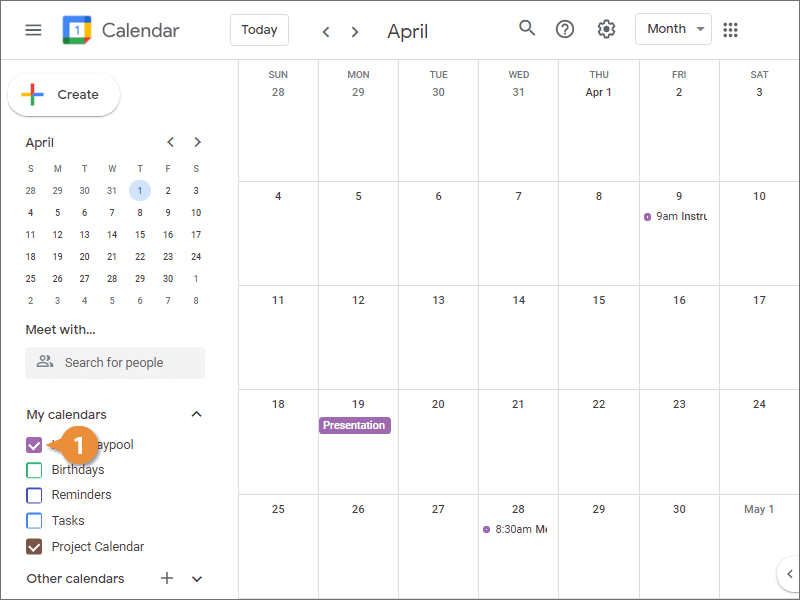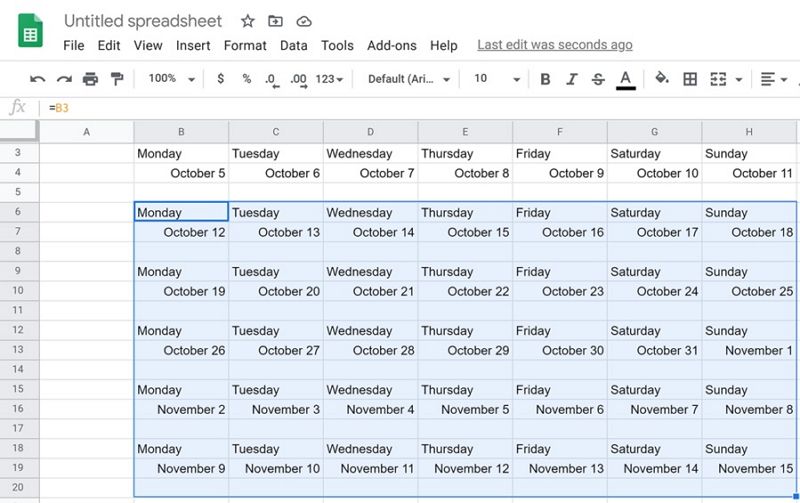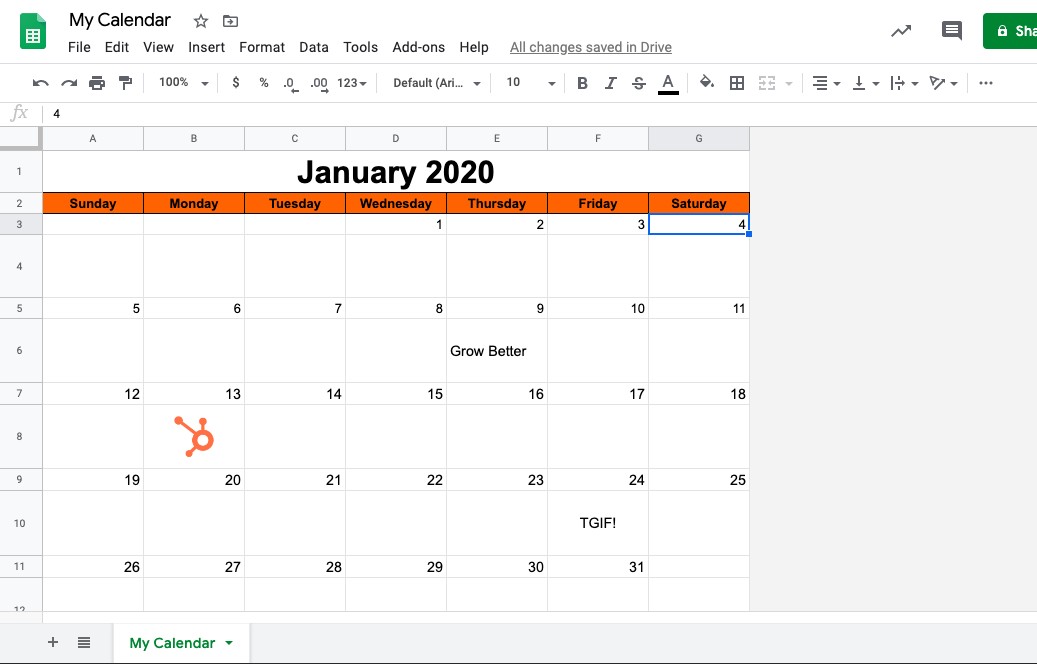Creating Highly effective and Customizable Calendars in Google Sheets: A Complete Information
Associated Articles: Creating Highly effective and Customizable Calendars in Google Sheets: A Complete Information
Introduction
With enthusiasm, let’s navigate by the intriguing subject associated to Creating Highly effective and Customizable Calendars in Google Sheets: A Complete Information. Let’s weave attention-grabbing info and supply recent views to the readers.
Desk of Content material
Creating Highly effective and Customizable Calendars in Google Sheets: A Complete Information

Google Sheets, whereas primarily identified for its spreadsheet capabilities, presents surprisingly sturdy instruments for creating customized calendars. Whereas it might not boast the visible aptitude of devoted calendar functions, its flexibility and integration with different Google companies make it a robust selection for particular wants, particularly when mixed with formulation and scripting. This text explores numerous strategies for constructing calendars in Google Sheets, from easy visible representations to complicated, dynamic scheduling programs.
I. Fundamental Calendar Creation: Visible Illustration
The best strategy includes manually making a calendar grid. This methodology is greatest for static, visually interesting calendars that do not require dynamic updates.
A. Organising the Grid:
-
Headers: Within the first row, create headers for the times of the week (Solar, Mon, Tue, Wed, Thu, Fri, Sat). Daring the textual content and think about using cell merging for a cleaner look.
-
Dates: Within the second row, begin coming into dates for the primary week of the specified month. You’ll be able to manually kind these in or use the
DATEoperate to automate the method. For instance,=DATE(2024,1,1)will return January 1st, 2024. Autofill this throughout the row. -
Subsequent Weeks: To proceed to the following week, use autofill to repeat the date values down. Modify the components as wanted to increment the week. Alternatively, you should utilize a components that calculates the date based mostly on the row quantity.
-
Formatting: Apply formatting to enhance readability. Think about using borders, alternating row colours, and totally different font sizes for headers and dates. Conditional formatting can spotlight weekends or particular dates.
B. Including Occasions:
Manually including occasions includes typing descriptions instantly into the cells equivalent to the date. That is easy however limits the power to trace and handle occasions successfully. For extra superior occasion administration, think about using different strategies described beneath.
II. Superior Calendar Creation: Leveraging Formulation and Capabilities
For dynamic calendars that robotically replace and supply extra performance, leveraging Google Sheets’ components capabilities is essential.
A. Dynamic Date Technology:
As an alternative of manually coming into dates, use formulation to robotically generate them. The WEEKDAY operate can decide the day of the week, permitting you to robotically place dates appropriately. The EOMONTH operate calculates the final day of a month, serving to decide the variety of weeks to show. A mixture of those capabilities, together with IF statements to deal with edge circumstances (e.g., months beginning on totally different days), can create a totally dynamic calendar.
Instance Formulation (Illustrative):
This instance is simplified and would require changes based mostly in your sheet setup:
=IF(ROW()-1<DAY(EOMONTH(DATE(YEAR(A1),MONTH(A1),1),0)),DAY(DATE(YEAR(A1),MONTH(A1),ROW()-1)),"")This components assumes:
-
A1comprises the primary day of the month (e.g.,=DATE(2024,1,1)). - The components is positioned within the cell beneath the header row (row 2).
- The components dynamically calculates the day of the month for every row.
B. Occasion Administration with Information Validation:
As an alternative of instantly typing occasions into the calendar grid, create a separate sheet to handle occasions. Use information validation to create dropdown lists for months and days, making occasion entry extra organized. Then, use VLOOKUP or FILTER capabilities to drag occasion information onto the calendar grid, displaying occasions on their corresponding dates.
C. Conditional Formatting for Occasion Highlighting:
Conditional formatting can robotically spotlight cells based mostly on the presence of occasions. For instance, you possibly can spotlight cells containing particular key phrases or values out of your occasion information sheet. This enables for visible cues indicating busy days or essential occasions.
III. Creating Interactive Calendars with Google Apps Script
For max customization and interactivity, Google Apps Script presents highly effective scripting capabilities. This lets you construct calendars with options unavailable by formulation alone.
A. Dynamic Calendar Technology:
Scripts can robotically generate the complete calendar grid, together with dates and occasion information, based mostly on consumer enter or information from exterior sources. This eliminates guide enter and ensures accuracy.
B. Occasion Dealing with and Interactions:
Scripts can add occasion dealing with to your calendar. Customers can click on on dates so as to add or edit occasions, and even create new occasions by a customized dialog field. This provides a big degree of interactivity.
C. Information Integration:
Scripts can combine your calendar with different Google companies, similar to Google Calendar or Google Duties. This enables for automated synchronization of occasions, making certain consistency throughout totally different functions.
Instance Script (Illustrative – Requires adaptation):
It is a simplified instance and requires important modification to suit your particular wants:
operate createCalendar(yr, month)
// ... (Code to generate calendar grid utilizing yr and month) ...
operate addEvent(date, occasion)
// ... (Code so as to add occasion to calendar based mostly on date and occasion description) ...
IV. Selecting the Proper Strategy:
The optimum strategy depends upon your particular wants and technical expertise:
- Fundamental Visible Calendar: Splendid for easy, static calendars requiring minimal performance.
- Formulation-based Calendar: Appropriate for dynamic calendars with automated date era and primary occasion administration. Requires intermediate information of Google Sheets formulation.
- Google Apps Script Calendar: Greatest for extremely personalized, interactive calendars with superior options and information integration. Requires programming information in JavaScript.
V. Conclusion:
Google Sheets, with its versatile options and scripting capabilities, presents a surprisingly highly effective platform for creating calendars. From easy visible representations to complicated, interactive programs, the extent of customization is intensive. By combining the ability of formulation, capabilities, and Google Apps Script, you may construct a calendar completely tailor-made to your particular wants and workflow, providing a singular mix of spreadsheet performance and calendar group. Bear in mind to rigorously take into account your necessities and technical talents when selecting the suitable methodology for creating your Google Sheet calendar. Experimentation and iterative improvement are key to constructing a profitable and helpful calendar system.
![Dynamic Calendar Google Sheets Template [2024]](https://www.someka.net/wp-content/uploads/2023/03/Dynamic-Calendar-Someka-Google-Sheets-Youtube-Video-Cover.jpg)







Closure
Thus, we hope this text has offered useful insights into Creating Highly effective and Customizable Calendars in Google Sheets: A Complete Information. We recognize your consideration to our article. See you in our subsequent article!